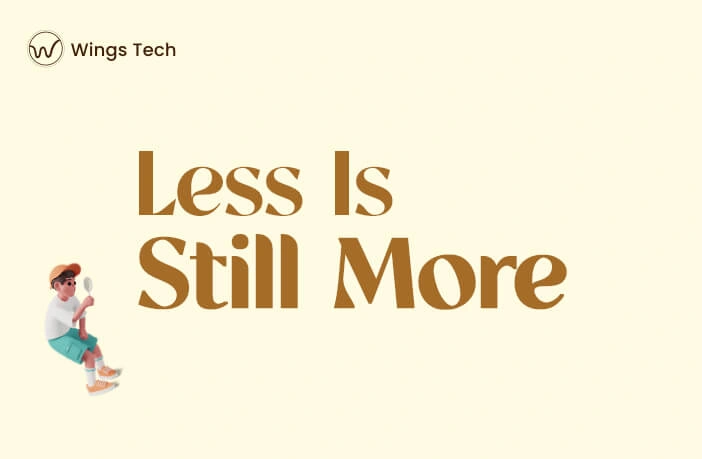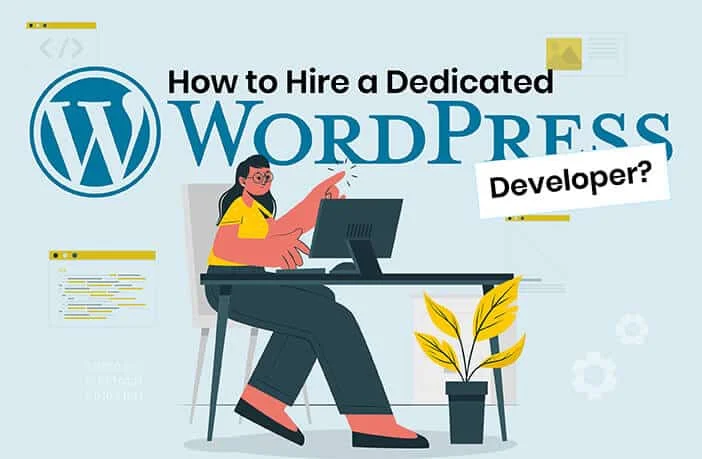Minimalism is a word that gets tossed up in a lot of various contexts. Saying something is minimalistic can take on many different meanings, whether it is a lifestyle or an art form. Designers who are seeking to convey important content in a new way are increasingly embracing minimalism in web design. Minimalism is prone to error just like virtually any trend in web design.
In terms of web design, what does minimalism mean? Isn’t that what matters most? The simplicity of a basic web design suggests less effort or time required to produce. At the end of the day, a minimal design aims to convey a feeling of simplicity and primary emphasis. It is, however, patently untrue that it requires less work. To communicate with the target audience directly and concisely, minimal web designs are purposefully devoid of extraneous features and gimmicks.
Minimal web design can easily be misconstrued as something that requires little time or effort. At the end of the day, minimalism is really about conveying a sense of simplicity, focus, and clarity. Nevertheless, claiming it requires less work couldn’t be farther from the truth.
Minimalist web designs are stripped of extraneous features and gimmicks to communicate clearly and concisely.
This includes techniques such as limited color palettes and negative space, as well as the ubiquitous principle “less is more.”.
First impressions matter a lot. Ensure that your website is clutter-free. The minimalist web design stands out for its bare spaces, daring compositions, sharp images, and distinctions. Eliminating unnecessary components will boost essentialism.
Web designers can easily get minimalism wrong, just as they can with any trend. What does minimalism mean in the context of web design? The question is, what is it not?
But first…
What is minimalism?
Nowadays, minimalism is one of the most influential techniques in web design. An increase in web complexity led to its popularity. Applied correctly, minimalism can help us focus on our designs to simplify user tasks. The EyeQuant study suggests a cleaner design results in a lower bounce rate. As websites have become more minimalistic, they have become faster to load, and are more compatible with different screen sizes.
The Swiss print design style became popular in the 1940s and 1950s when minimalism became more prominent. Colorful imagery, sharp sans serif writing, and vibrant colors made it stand out.
Web and digital platforms seized the “less is more” mindset after spreading to other mediums.
The evolution of minimalism in online design is attributed to the increasing number of website components such as navigation, call-to-action-buttons, imagery forms, and social networking plugins.
In this article, we reveal six reasons why minimalist web design is giving your competitors an advantage and how you can change that. In addition, the psychology of less is more is emphasized in this article.
1. Clean Websites Make Your Business Look Professional and Bigger
A website’s design makes up 94% of the initial impression, according to WebFX. This is aided by elements such as crisp, large images, large typography, and color code.
Neutral color palettes work wonders in web design and bring attention to the layout and structure. The user feels more connected to your brand.
Visitors are drawn to large, high-quality images against whitespace. Typography is large along with pictures, making the webpage look edgy and inviting.
Our company is among the top web development companies in India, and we are capable of incorporating strategies that will boost your website’s performance.
To avoid clients doubting your capabilities, never show giddiness on your website.
2. A Website that is Easier to Navigate
There are fewer interruptions, which results in a cleaner and clearer layout and helps the focus be redirected to the content. Users can find what they want easier since it cuts down on slack. The minimalism of a web design is defined by a few options on the page and a clear and compelling call to action.
You are one step ahead of your competition by addressing visitors’ curiosity milliseconds earlier.
To achieve a minimalist web design, structure and content must be organized. It facilitates the process of finding information about product descriptions, rates, locations, and contacts more efficiently.
The use of fewer colors and striking images creates contrast on a page. Viewers will be able to find items on your website more easily this way.
Your clients and visitors will be able to better navigate your website if the content of the website is easily readable.
3. Minimalist Web Design Provides Maximum User Experience
In any digital interaction your company has with visitors, the end goal is to sell ideas, products, services, or knowledge. Creating a positive user experience (UX) is essential.
A website with only a few elements loads faster. When a website’s loading time exceeds 3 seconds, 53% of mobile visitors leave.
If the loading time of a website is between one and three seconds, the bounce rate of that website will rise by 32%.
Retaining visitors will only happen when they are convinced to keep looking. Website Builder reports that 88% of visitors abandon a website after an awful visit.
4. Google rankings and user interactions that are more desirable
By having fewer visual elements on a website, search engines will be able to crawl the page faster. Google ranks your website higher as a result.
Google’s first page is viewed by 75% of users, according to Hubspot. Unless your website cuts, you are doomed.
By speeding up the loading process, bounce rates can be reduced and user interaction and consumption can be increased. Loading faster is made easier by having fewer visual elements. The website’s content can be accessed and interacted with immediately after landing.
If your website is cluttered, visitors will be confused, and they will leave before they get a chance to learn more about what you have to offer.
Poor rankings will ultimately lead to poor sales for such a website.
5. Cross-device compatibility enhanced
Mobile devices may not respond with the same responsiveness as desktop computers.
According to a recent GoodFirms survey, 73.1% of web designers feel non-responsive websites cause most users to leave.
An average of 7 hours is spent on a mobile device each day. A website that isn’t mobile-friendly upsets 48% of visitors.
A difficult-to-navigate mobile website can result in lost sales for businesses.
6. Timelessness in Style and Ease of Maintenance
The minimalist approach results in a more straightforward design. This simplified design results in a more aesthetically pleasing construction.
The simpler the site’s design, the easier it is to maintain. Simple design is proper for resolving an issue causing errors and adding new material to the site. Complex designs contain many plugins, themes, and features that create confusion and clog the website’s architecture.
Conclusion
As the concept of minimalism evolved from print and graphic design to digital design, it continued to be expanded and redefined.
A minimalistic design may seem simple at first glance, but to make it lightweight and user-friendly, you need to carefully consider each element before putting it together. Be sure to try to create a more efficient path across your website, so that you never sacrifice usability just because of visuals.
Wings Tech is committed to creating a customized web design that’s tailored to your target audience and offering based on data-driven insights and best practices.









